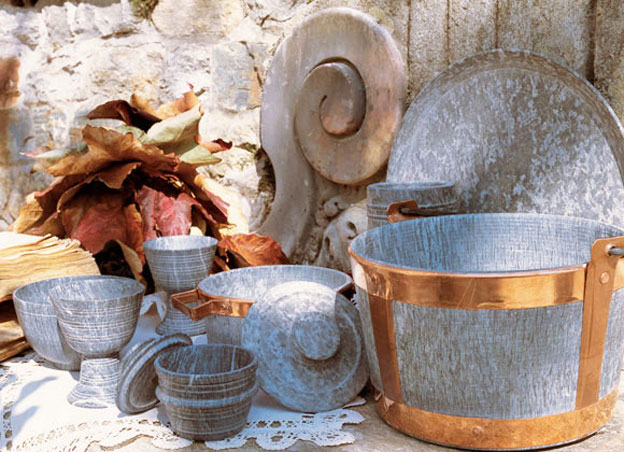A LITTLE HISTORY
Steatite, due to its malleability and resistance, has been used from time immemorial. It seems to have been employed since the Bronze Age, not as cookware but to make moulds for bronze casting. Later on it was used by several cultures to manufacture jars for storing oils. Its use in the manufacturing of pots by the ancient Reti civilization is mentioned by Ovid, who called them “lebetes” in Latin. This term became the Italic word “lavet” and then the modern Italian “laveggio”.
This soapstone cookware, mostly hooped with copper or wrought iron, was extensively used by families in northern Italy. It was often the only piece of cookware used to cook almost any food: milk, game, soups or puddings. Soapstone cookware has been produced on a fairly larger scale in northern Italy since the late Middle Ages, mainly in the Valtellina area. The ancient quarry of Piuro still exists near Prosto. The “laveggi” made by local craftsmen were widely renowned and even exported to neighboring regions.
At the time of Colonial Brazil, this heritage came to the region of Ouro Preto, in the State of Minas Gerais, where skilled craftsmen keep the ancient tradition of making soapstone cookware alive. Due to its unique features, this completely natural product remains an ideal cooking tool to this day.


